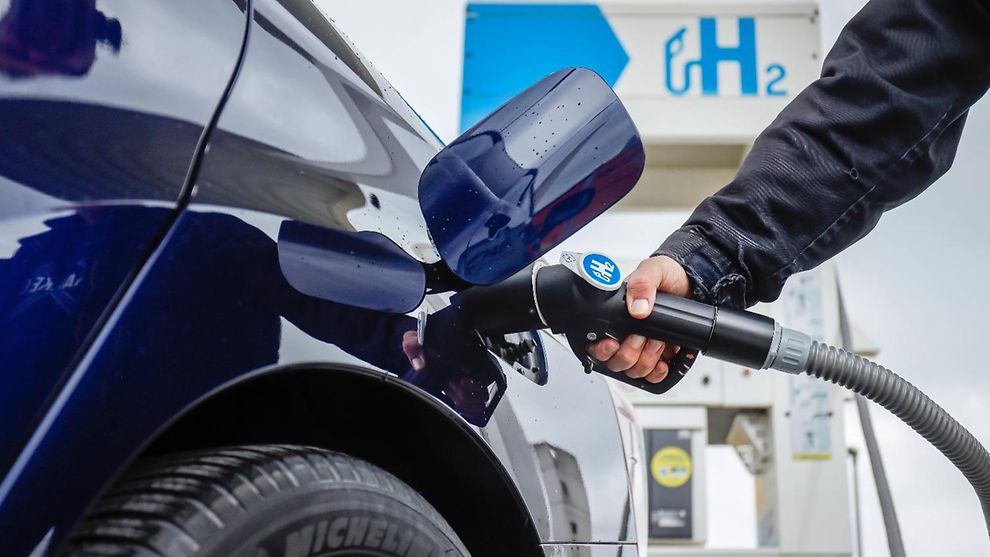Hydrogen strategies
At the beginning of June, the German government decided on a national hydrogen strategy. Hydrogen is crucial for the decarbonization of important German core industries such as the steel and chemical industry, but also the transport sector. At the same time, hydrogen technologies can develop into a central business area for German exports. To consistently implement and further develop the National Hydrogen Strategy, which includes investments of nine billion euros in industry and research, a National Hydrogen Council was formed.
Just in time for the German EU Council Presidency, the EU Commission, under its German President Ursula von der Leyen, has also presented a hydrogen strategy. With possible investments of up to 470 billion euros over the next 30 years, this strategy naturally has a much larger volume than its German counterpart. “The EU’s energy system has to become better integrated, more flexible, and able to accommodate the cleanest and most cost-effective solutions. Hydrogen will play a key role in this as falling renewable energy prices and continuous innovation make it a viable solution for a climate-neutral economy” said EU-Commissioner for energy, Kadri Simson, at the strategies launch. For, as she went on to say, “75% of the EU’s greenhouse gas emissions coming from energy”.
Objectives and implementation
The two strategies show a strong preference for green hydrogen. This is hydrogen produced by electrolyzers operated by wind power and photovoltaics to split water into hydrogen. But hydrogen can also be produced by separating carbon from natural gas, which is then called grey or blue hydrogen. To get the hydrogen economy up and running at all, it will require considerable investment. According to the EU strategy, there is a particular need to review infrastructure and logistics networks and to adapt infrastructure planning tools to include hydrogen systems.
Since the introduction of hydrogen in Europe requires coordinated and comprehensive efforts, the EU Commission has created a “European Clean Hydrogen Alliance”, similar to the German National Hydrogen Council. This alliance is composed of leading representatives of industry, civil society, the European Investment Bank, and national and regional ministers and is intended to represent the entire hydrogen value chain and all interest groups.
The EU Commission has also launched several programs and financing instruments. For example, the economic stimulus package Next Generation EU is intended to promote the hydrogen economy by providing incentives for investments from the private sector. Also, the European Regional Development Fund, the Cohesion Fund, the React-EU initiative, and the Just Transition mechanism are also worth mentioning. All these instruments are designed to work with government and regional authorities to launch (not only) hydrogen projects and to facilitate technology transfer and public-private partnerships.
Green Hydrogen globally
A global market for green hydrogen could soon emerge, as some countries are already a little more advanced in their development than Germany and even the entire EU. Japan and South Korea, for example, are considered worldwide pioneers in hydrogen technology and usage. In Japan, Panasonic installs small fuel cell power plants, called Ene Farm, in houses. Toyota is counting on hydrogen vehicles and wants to have 100 hydrogen buses rolling through the streets of the Tokyo metropolis for the 2021 Olympic Games.
South Korea is similarly ambitious, where the goal has been set to power over six million cars and 41,000 buses with fuel cells by 2040. Hyundai has announced that it will bring fuel cell vehicles to the price level of battery-powered electric cars by 2025.
Here in Europe, hydrogen-powered vehicles are very rarely seen on the roads. If you ever see such a car, it is usually either a Toyota Mirai or a Hyundai Nexo. The German and European automobile companies continue to prefer battery-powered electric cars when it comes to sustainable propulsion technologies. The undeniable market weakness of hydrogen vehicles is mainly due to the very high market prices, which hardly anyone is willing to pay, and the limited infrastructure.
Companies must work harder on research and development to avoid excessive prices and make hydrogen-powered engines more economical. The infrastructure is a matter for the state and its ministries. I see the hydrogen technology as future-proof, especially in mobility, and I very much hope that the economic stimulus packages and hydrogen strategies will achieve their objectives and make their contribution to sustainable mobility!
